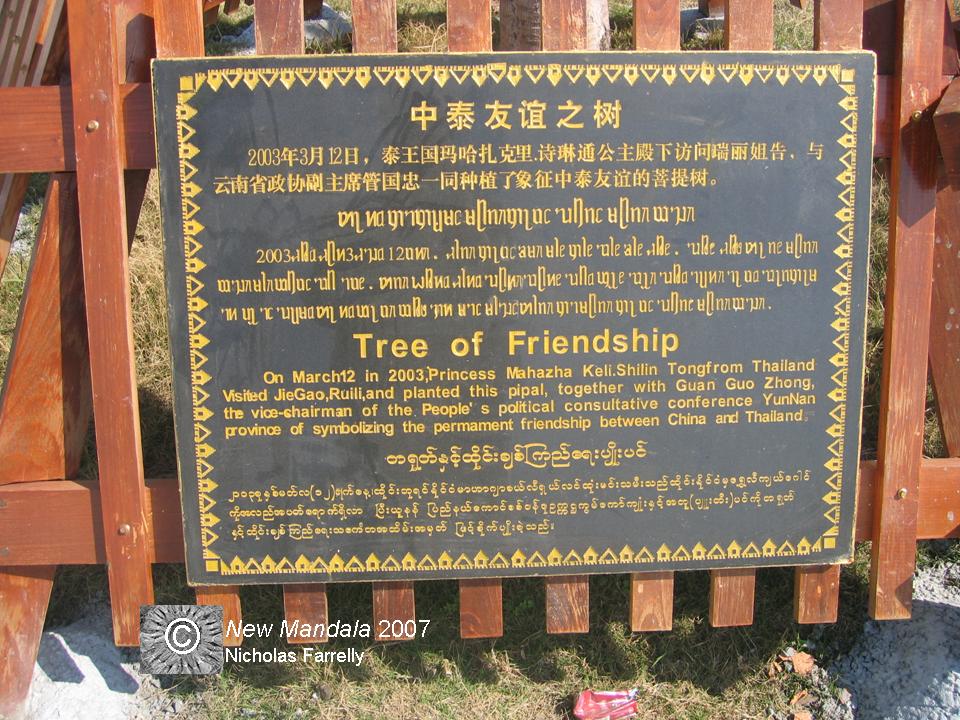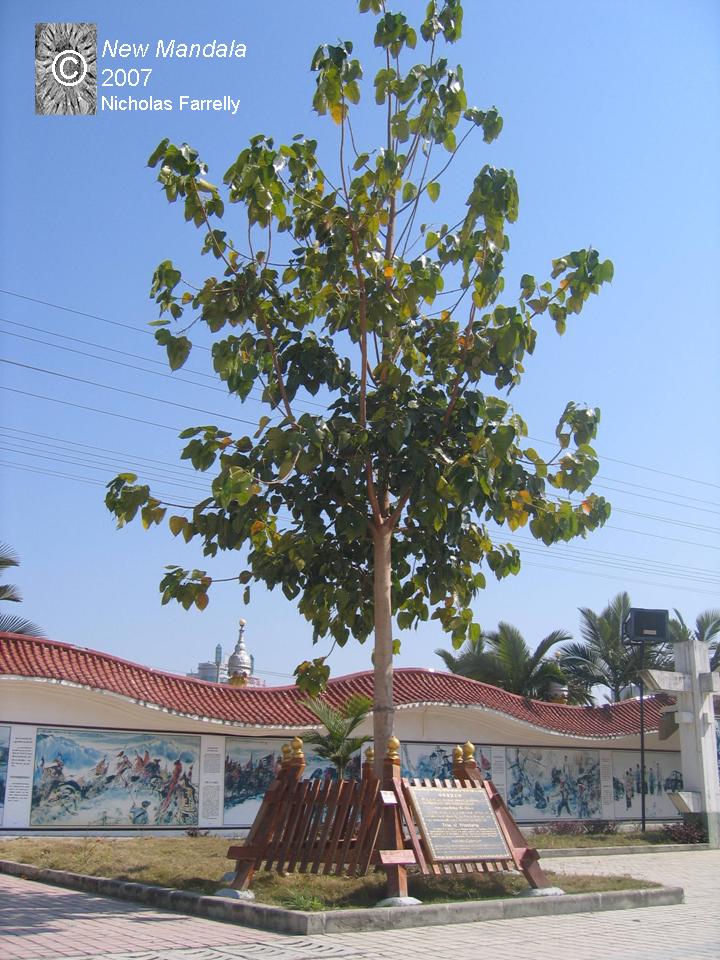One of the border towns in southwestern Yunnan, the trading outpost of Jie Gao, saw a visit from Princess Maha Chakri Sirindhorn in March 2003. This was part of a five-day country-wide tour of Burma. At the time, there was a report of resentment on the Shan side of the border resulting from heavy-handed Burmese security operations.
As New Mandala readers know, the Thai royals undertake regular trips abroad: all covered in much detail in daily newscasts. Many of these trips result in glossy commemorative volumes giving day-by-day, and blow-by-blow, accounts of royal progress.
Such trips usually involve heavy schedules of official functions. On 12 March 2003, at one such event, Princess Sirindhorn planted a Bo tree on the Chinese side of the Sino-Burmese frontier. Sirindhorn’s visit to this area is still commemorated in the robust planting that marks one side of the local Dai-Jinghpo cultural park.
The plaque is written in Chinese, Dai, English and Burmese.
For New Mandala readers, I can happily report that the tree looks to be in good health.
 Facebook
Facebook  Twitter
Twitter  Soundcloud
Soundcloud  Youtube
Youtube  Rss
Rss 
